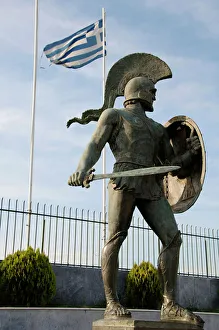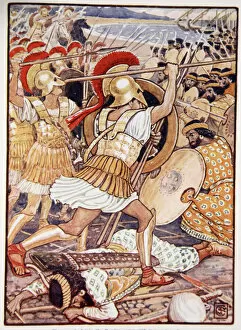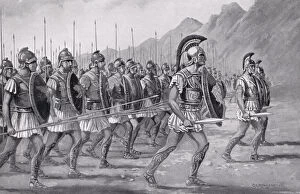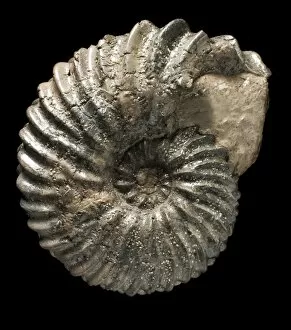Hoplites Collection
"Hoplites: The Fearless Warriors of Ancient Greece" Step back in time to the era of Leonidas I, the renowned King of Sparta, whose monument still stands proudly in Spart
All Professionally Made to Order for Quick Shipping
"Hoplites: The Fearless Warriors of Ancient Greece" Step back in time to the era of Leonidas I, the renowned King of Sparta, whose monument still stands proudly in Spart. These they were not just ordinary soldiers; they were a force to be reckoned with. With their iconic ancient Greek costumes and unwavering determination, these warriors crashed into the Persian Army with tremendous force. Their bravery and skill on the battlefield are immortalized in historical artifacts such as the funerary stele of Sosias and Kephisodoros from 410 BC. The Battle of Marathon, depicted in an illustration from Hutchinson's History of Nations, showcases how hoplites fought valiantly against all odds. They stood united, shoulder-to-shoulder on the Chigi vase from 650-640 BC or on the reverse side of Eurytios' Krater in Corinthian style. Even tomb paintings from Paestum give us a glimpse into their lives - foot soldiers marching alongside cavalry units, ready to defend their homeland at any cost. A Proto-Corinthian aryballos adorned with combat scenes further emphasizes their dedication to warfare. These battle-hardened warriors left no stone unturned when it came to defending Greece's honor. Whether it was through lithographs depicting intense battle scenes or chromolitho prints showcasing Greeks' resilience and unity during conflicts. Not limited only to mainland Greece, hoplite tactics spread throughout Macedonia as well. A Macedonian Phalanx is beautifully illustrated in Hutchinson's History of Nations – a testament to how this formidable fighting style transcended borders. They were more than just soldiers; they embodied courage and loyalty that defined an entire civilization. Through art and history alike, we can appreciate their legacy as true champions who fought for freedom and justice.
















